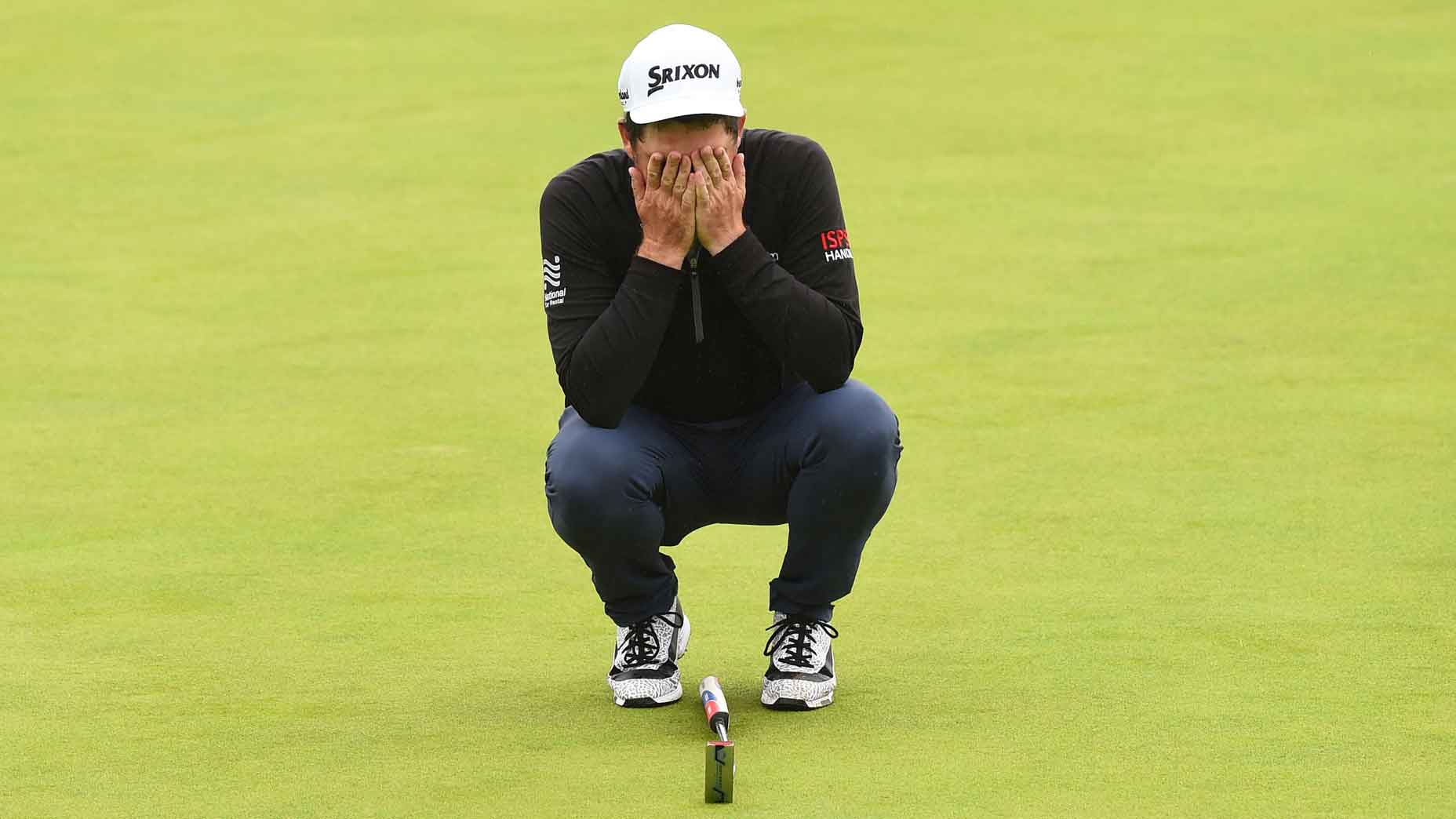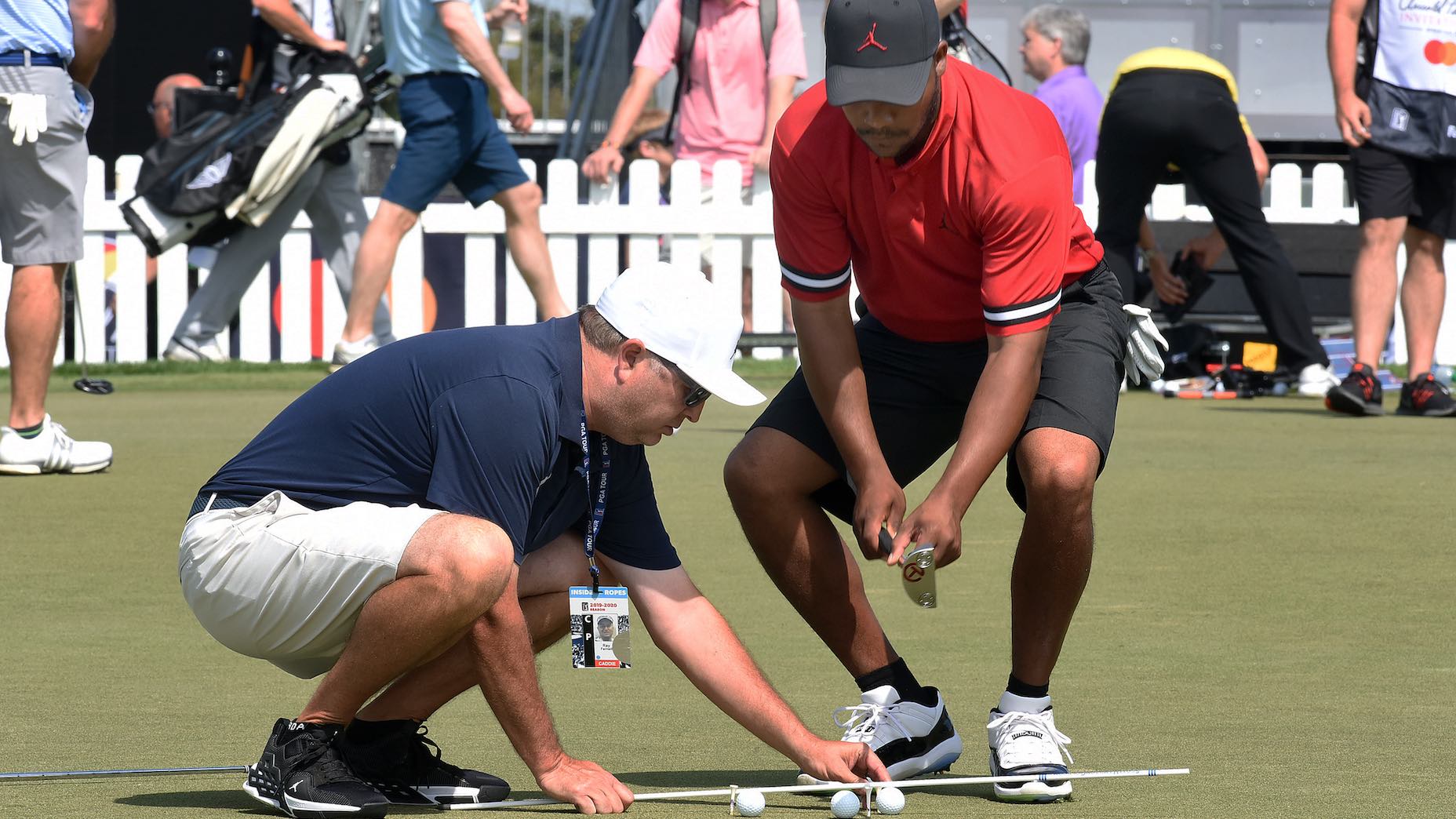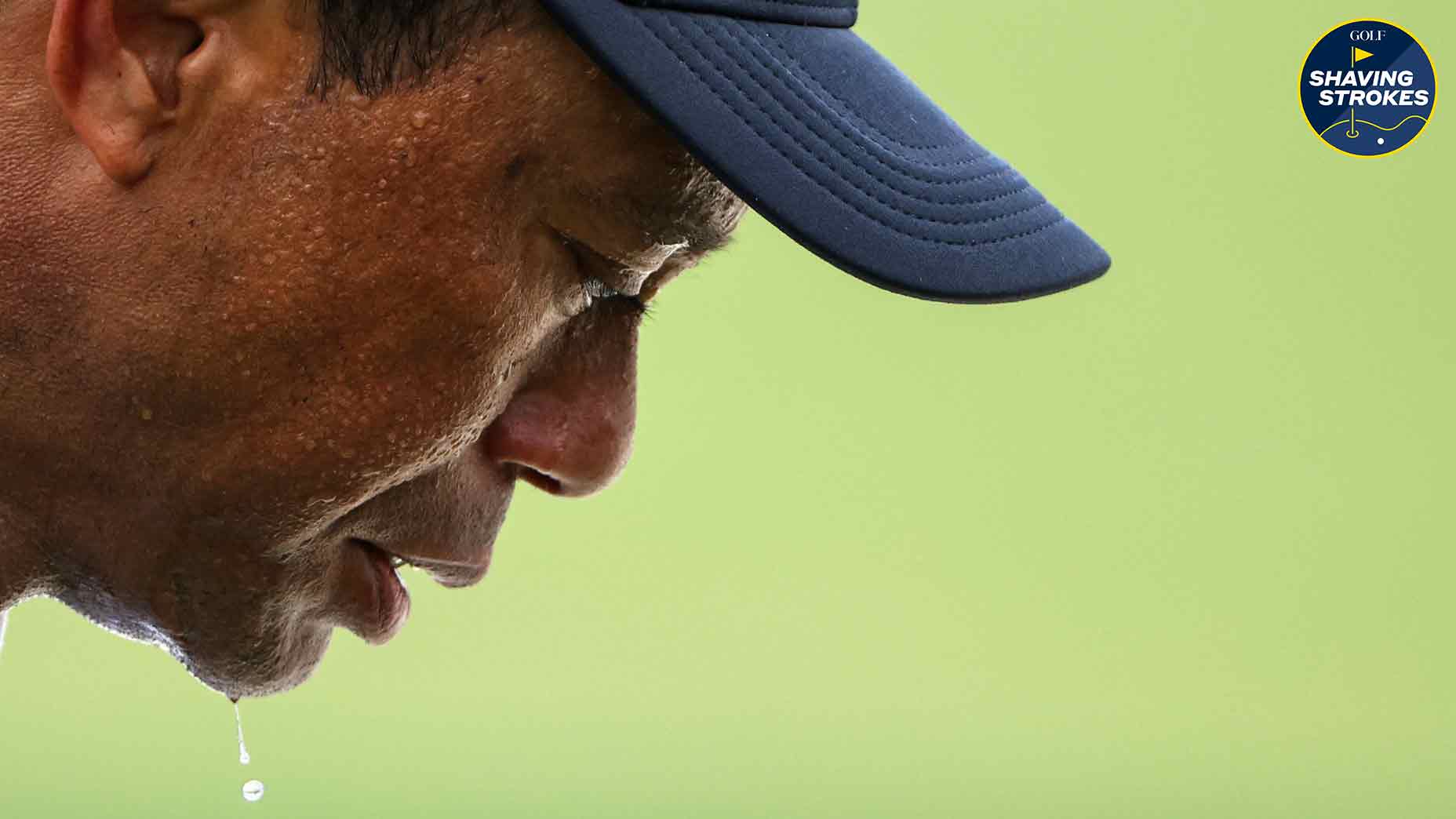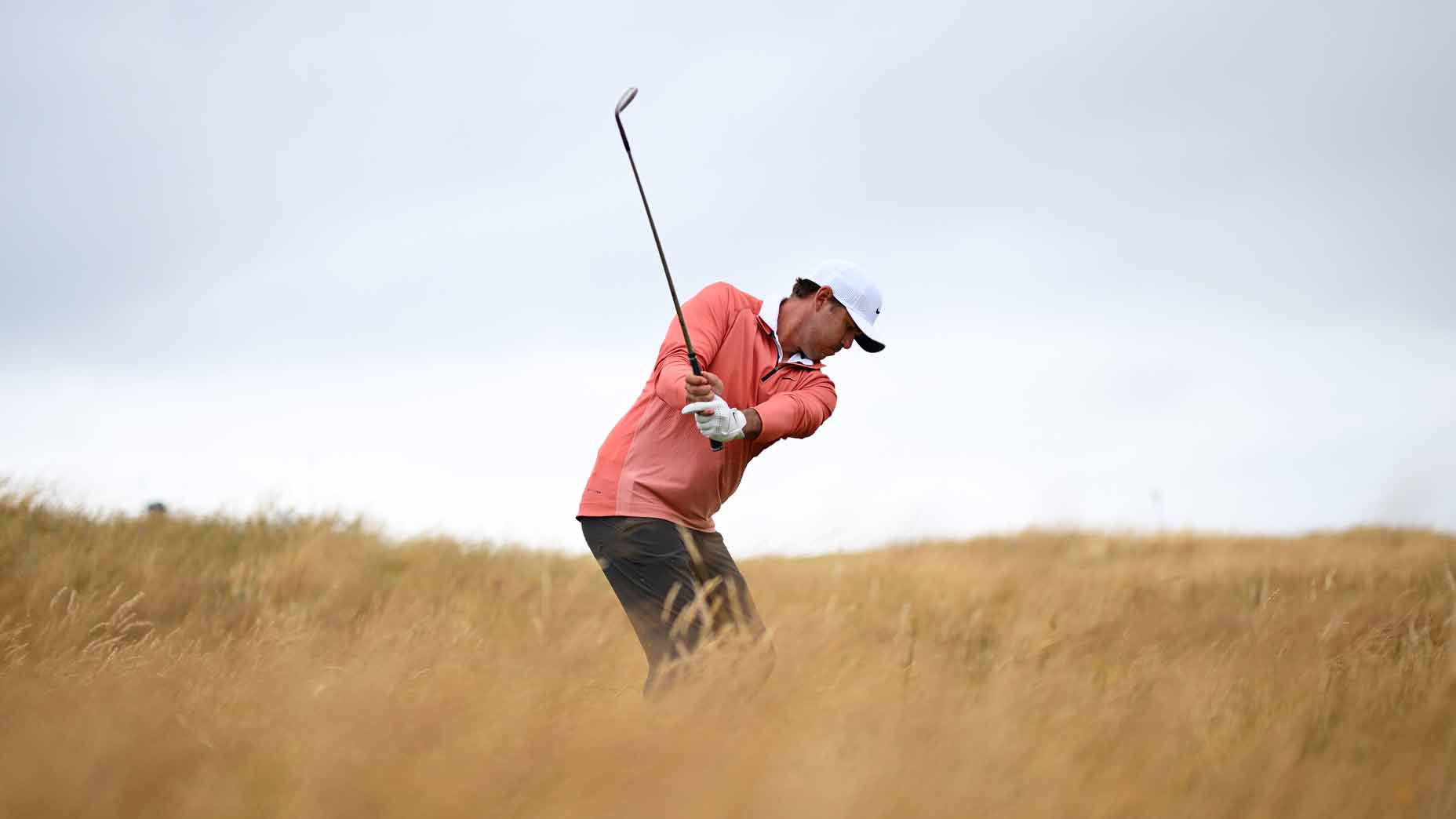Where putting yips come from, according to a top Tour putting coach

Keegan Bradley agonizes over a missed putt at the 2019 British Open.
Getty Images
If you’ve ever suffered from the putting yips, you know how excruciating they can be. Nothing is ever a gimme, and the “easiest” short putts become literal knee-knockers.
Where does this dreaded affliction come from?
Short-game guru John Graham counts Justin Thomas and Cameron Champ as clients, and on this week’s episode of Off Course with Claude Harmon, he explained not only how yips develop, but also how he helps his clients defeat them.
“I don’t think it’s a neurological disorder,” Graham said. “I think it’s a reaction to an expectation, in terms of a type of miss. I think it starts mechanically, where their stroke is off enough that if they don’t do something, the ball is gonna go somewhere, either right or left.
“And over time they pick up on that fact, and they’ll be like, okay, I know if I don’t do something it’s going to miss this way,” he continued. “So then they start to make an adjustment mid-stroke to make it not miss that way, and if it gets to a point where the adjustment is bigger than the original mistake, now they try to readjust it again, and that’s where the [yip] is usually gonna come from. It’s a double attempt to try to fix, and then save, a mechanical issue that they usually have.”
The good news? Graham says that he’s never seen a yip that he hasn’t been able to fix.
“I’ve never had anybody that had a yip that I couldn’t help fairly quickly,” he said. “It’s usually something very specific in their technique that either you can adjust with how they’re holding it — because usually the adjustment is happening in one of the two hands: the right hand’s trying to save it and help it or the left hand’s trying to save it and help it — once you figure out which hand’s doing the dirty work, you try to minimize its ability to actually move the club, and then usually things can smooth out fairly quickly.”
For more from Graham, including what he thinks made Tiger Woods such a good putter, and whether or not your geographical location affects a putt’s break, check out the full interview below.











